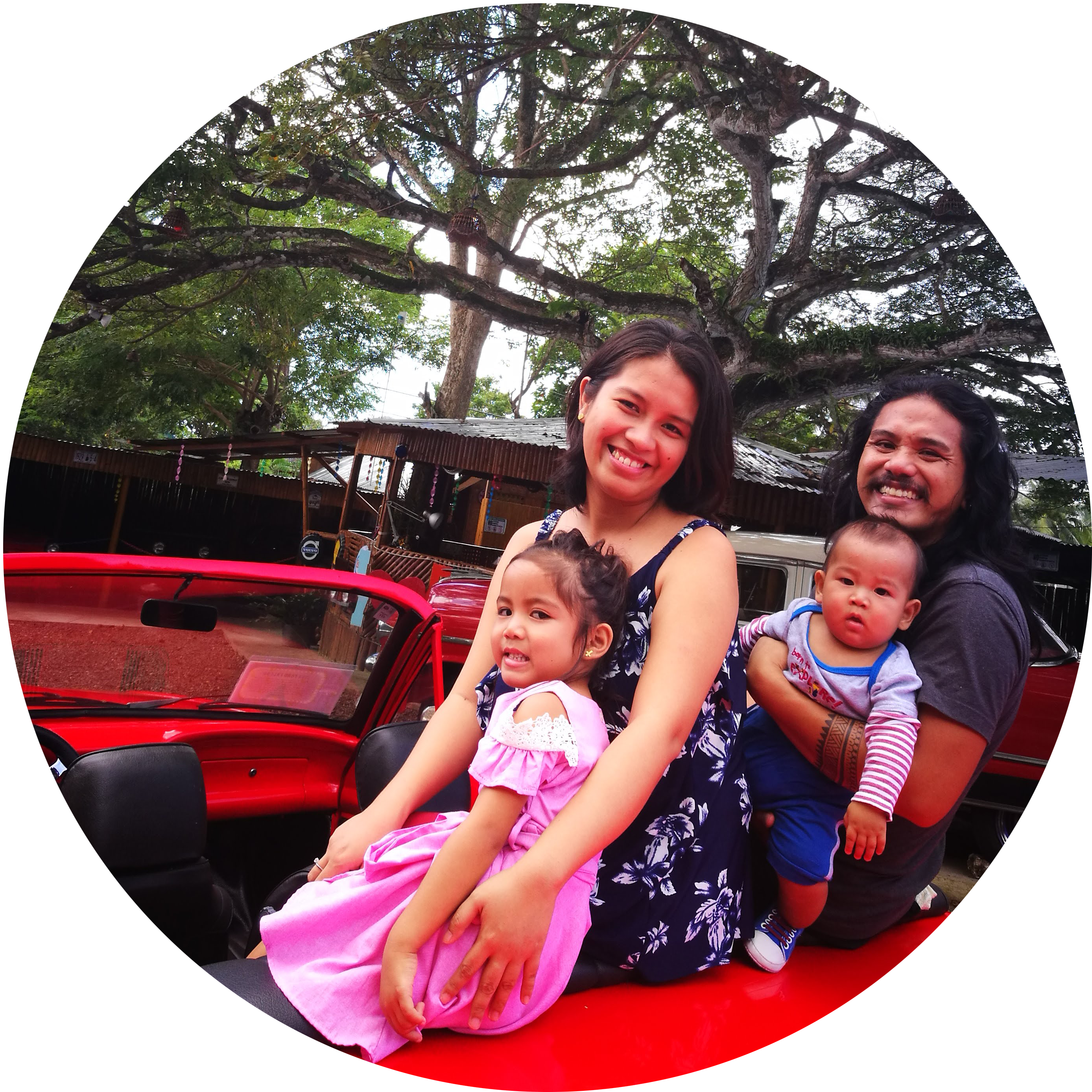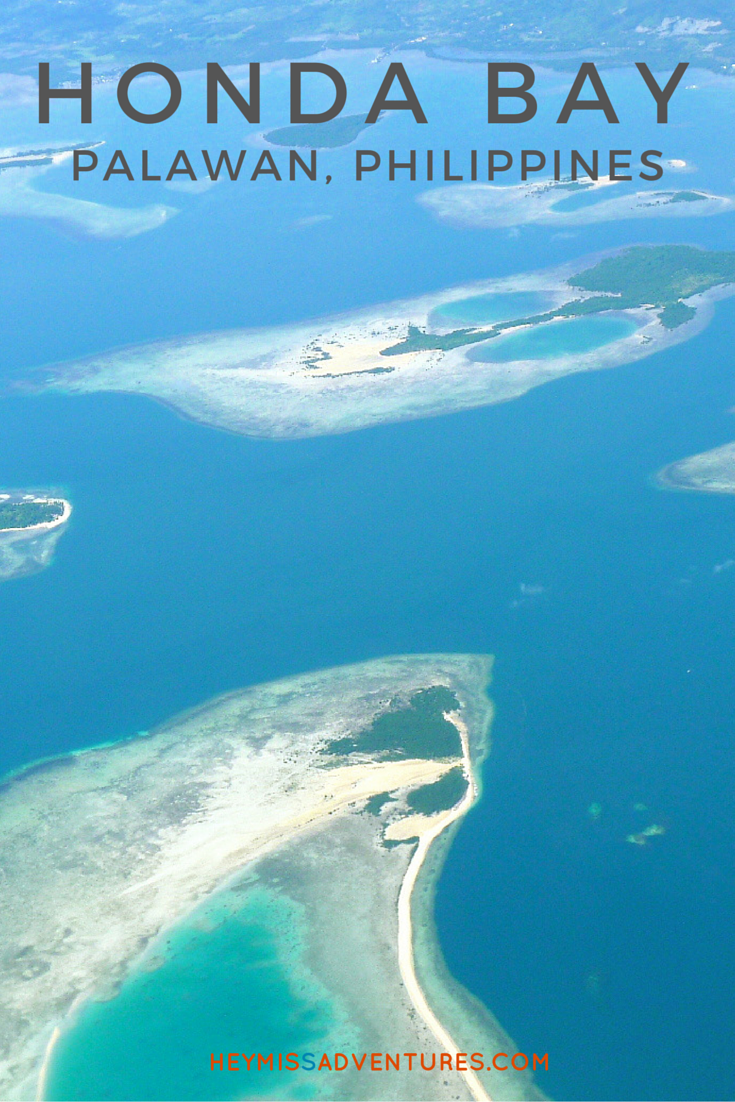22 Days in Eastern Mindanao: How Much Does Long Term Travel Cost?

We recently concluded our long-term travel around Eastern Mindanao and people have been wondering just how much we actually spent after 22 days (actually, 22 nights and 21 days) outside of our home.
But, first, you might be wondering why we decided to go on such a long trip. Well, we have a few reasons in mind:
- we wanted a change in environment; we’ve been cooped up quite long (about a year) in the house and we work from home — that can definitely affect your sanity
- I wanted some inspiration and new material to help me with my work as a travel writer
- we wanted to gain focus so we can prioritize things in life (like repaying debts) without distraction
- we wanted to see how we will do living on our own (planning to move out of the house by the start of next year) even if we still had a lot of bills up our sleeves
- we really wanted to test out how life is as digital nomads
I’m not sure if that is enough to convince you but it was enough to convince us to pursue the trip. We also had the chance to attend a wedding (the daughter had a role) and meet up a few former office mates during our trip.
Now, enough about that and on with the breakdown of our expenses. Let me remind you that this is already good for two adults and a toddler. You could probably go lower (or higher) depending on your way of traveling.
Transportation
Total Expenses = ₱9,552.90
When it comes to transportation, I’d have to say that the partner is the best at haggling. I often give in to comfort and to avoid having back-and-forth conversations with the driver. Sometimes, the partner would insist on walking, as long as it did not exceed five kilometers, so we could save money and also familiarize the place. There were several days though that we just stayed inside because I had to nurse a foot injury.
Our top tip in saving transportation expenses would be to always commute like a local. Yep, we did that even though we had huge backpacks with us.
Drivers asking for a pakyaw charge (a usually more expensive fixed rate to cover their “income loss” from the lack of passenger going back) is a common tourist trap so if you arrive at a new place, walk to the highway where you can get more transportation options. You’ll be surprised at how near that is and how much money you can actually save by just doing that.
Accommodations
Total Expenses = ₱5,894.00
When it comes to finding decent accommodation, the standard rate we have in mind is ₱500 a night.
There is this transient house we always stay at when in Davao City; we have stayed at their bigger room for ₱350 a night and add in ₱150 to use the airconditioning. This time around, however, we took a single room (poor partner had to sleep on the floor) for just ₱250 a night. We could have gotten it for just ₱5,000 a month but had to shorten our stay.
When we attended my former colleague’s wedding, the partner made friends with the caterer who offered us a room in his house for free. Yep, how awesome! We grabbed the opportunity and stayed there for six nights! Big thanks to Adrian (have your food catered by Morsels Express in Davao City) and Kevin who are now offering their room through AirBnB.
As we moved to other cities, we stayed in hotels and budget inns averaging at ₱500 a night. We could have stayed longer camping by the beach but the weather wasn’t very nice (very, very humid) and we couldn’t open up our tents because of the nasty mosquitoes. We had to move out after a night and stayed in the city instead.
But, at an average expense of ₱268 per night, we didn’t do so bad, right?
Food
Total Expenses = ₱5,242.10
We all know that dining out or even buying viand from outside can already eat up a major chunk of your budget. When we look for accommodations, we always try to see if there is an access to a kitchen (hooray for transient homes) so we could cook our own food.
And, since Filipinos are heavy rice eaters, we also realized how much we can save if we, at least, cooked our own rice. Each meal would cost us ₱30 on rice alone but, if we bought a kilo for ₱35 to ₱45, it would last us the next three to four meals. Cool, huh?
We also changed our breakfast to just bread and a glass of milk or coffee after realizing that Adrian and Kevin did the same. Hey, we didn’t scrimp on food — we just had to limit it so what we had was just enough to make us full (at home, my mom has a store so it felt like junk food was “unlimited”).
Other Necessary Expenses
Total Expenses = ₱4,657.00
So this part is a little tricky because I added in our grocery expenses which sometimes included our food. We also bought milk for the kiddo, toiletries and medicine and other supplies for my injured foot.
However, the biggest expense we had was our much-needed camping stove for ₱2,100 at Basekamp in GMall, Davao City. We actually already brought this when we were already on our way to Mati City. We also had to buy board shorts for the partner for our planned days at the beach since he forgot to bring his.
I didn’t include the initial expense I paid for a month-long mobile Internet connection although I did count the additional load I bought when we found out about the annoying data caps.
Unnecessary Expenses
Total Expenses = ₱1,903.00
This category included visits to museums and other attractions. We didn’t spend a lot on it and had to skip out a lot during the last leg of our trip because we were slightly out of budget and time.
This was already our third time in Davao City so it didn’t feel like we missed out a lot. We visited places we haven’t such as the Philippine Eagle Center and Gap Farm. In Mati City, we saw Dahican Beach and Subangan Museum and in Cateel, we visited Aliwagwag Falls. While I was doing some work, the partner and daughter would often take a stroll to the nearest park or playground, allowing them to have free entertainment. (It also helps exhaust the active little kiddo. Haha!)
We also had to spend some money on laundry (thank you to Hala Laba in Davao City for sponsoring our 3kg of clothes; they offer free pick-up and delivery, too) twice although the partner manually did it for a majority of the trip.
In a Nutshell
That’s about it.
I’ll also be publishing an expense guide for those who want to go on a land trip around Eastern Mindanao, as well as a guide per destination, in the next few posts.
We did a lot of research on the road and found out that there aren’t a lot of travelers who go from left to right: Cagayan to Davao City to Mati City to Cateel (Davao Oriental) to Bislig City (Surigao) to Butuan City to Surigao City. Whew.
Here’s a quick recap:
| Category | Total Expenses | Average Expense Per Day | Percentage |
| Transportation | ₱9,552.90 | ₱434.22 | 35.11% |
| Accommodations | ₱5,894.00 | ₱267.91 | 21.66% |
| Food | ₱5,242.10 | ₱238.28 | 19.27% |
| Other Necessary Expenses | ₱4,657.00 | ₱211.68 | 17.12% |
| Unnecessary Expenses | ₱1,903.00 | ₱86.50 | 6.99% |
| TOTAL | ₱27,249.00 | ₱1,238.59 | 100% |
Key Takeaways:
- Always make friends. You’ll never know who offers free accommodation. 😉
- You don’t need luxury accommodations; just one with a decent place to sleep in and bathe in. Stable and fast Internet connection is a must for digital nomads. (Or you can visit friends and offer snacks, too.)
- Cook your own food.
- Use transportation like a local.
- Take advantage of free attractions. You don’t have to cross off every single item in your bucket list; it isn’t a race.
- Try to limit your travel on land because doing it non-stop (we did it on Day 21 and rode three buses across ~382 kilometers and ~14 hours) IS exhausting.
Are we planning any similar travel soon?
Not this year since we have already made priorities (pay debts and mortgage and make our future house livable so we could have it rented when we travel again next year).
We hope this post has inspired you to go out and travel (long term and indefinitely), too.
If you have questions, do comment below. We would love to hear from you!

Oh, hello there!
Pam is an outdoors-loving millennial momma who loves to hike, trek and camp in the beaches and mountains with her partner and their kiddos. When not exploring the great outdoors, she works with bloggers, coaches and solopreneurs to free up their time so they can work on the things that they love and enjoy the most.


)

)












The price is quite reasonable for 22 days.. but never tried that kind of long vacation.
Only Php 100 in Amihan sa Dahican? Wow! That is something worth the try!
I haven’t tried long-term-travel, the longer I did was 5D/4N when we went to Palawan. If ever I’ll do so, I’d make sure I have enough savings for that. Lol. You are good in budgeting, I don’t think I can make it that way. Hahaha
You got the best budget with your accommodation! I was also planning to have long travel but budget is always a problem for me. Thanks for sharing this Pam. I learned from it. 😀
I so wish I can pack up my bags and just go somewhere to write. Hopefully with my husband in tow 😉
Hahaha. If that’s what you REALLY want, I think nothing will stop you from doing that. 😉
Great budgeting skills ate Pam. You’re really a mother gyud kay you know how to budget. I just hope I’ll get to have that kind of experience soon. Maybe after I graduate. 🙏🏿🙏🏿🙏🏿
Haha. You’ll be surprised, I actually gave that task to my partner and tell him he now majors in marketing…and budgeting. We’ve exchanged roles and I also have no discipline over money just yet so…kudos to him. 😉
I usually spend 5K for short local trips give or take 5 days or less. The budget you gave is very realistic.
A responsible traveler knows how to budget. Good job, Pam! Tipid tips and insightful suggestions for future travelers! 🙂
Wow! You have perfectly budgeted your travel. I have tried a week travel and I think I overspent. I would surely get some tips from your experience Pam. Thank you so much. Plus it seemed that long term travel had been filled with excitement and joy because you were with your family. 🙂
Great work on the budgeting and breaking down the costs! That’s probably the thing I dislike the most when it comes to travelling, the number-crunching. Hahah. Kudos on making everything work! 😀
Wow! Testing the limits of being digital nomads in the Philippines. I bet it was a lot of fun Pamskie. By the way, love your new hair!
Love,
http://www.channelmarie.com
Wow thanks for this pam. it really helpful. You really enjoy in your trip.
Na shock ko slight sa accommodation because 5k ra sya kapin for 22 days! But as I read along, it’s true jud nga luxury accommodation is not really a necessity during long trips like this. I really like to experience this soon in the future! I hope my future family would be as adventurous as yours! <3
x, Kat of Nested Thoughts
And the kindness of people really goes a long way… Hehehe 🙂
Wow! This trip is really awesome. 27k for 22 days and thats for the 3 of you already including your toddler. 🙌Amazing budgeting and network of friends. I just wish I can travel for a month in the future without thinking for work. Its really generous of you sharing this experience to your readers. This really inspires me to try such long travels soon. Can’t wait for your future posts related to this travel..
Thank youuuuuu. Kudos to the partner for forcing me to stay on budget. Hahaha. And he’s awesome at making friends, too, which was why we ended up staying for free in an awesome house for six days! 😀
You guys rock! I like the idea of walking anything below 5k hahaha. Your partner has a way of saying that you need to lose weight. I am kidding.
I am truly impressed with what you accomplished. At least a know one person now who lived like foreign backpackers while going around the country. I might just do a similar trip some time. Keep walking!!! 😉
Let’s walk and eat around Cebuuuuuu!
I like the idea of having a food crawl without any form of transportation aside from our own feet! Hahaha. It might help balance out the calorie intake from the food trip!
Yes!!! Let’s do it soon!
In the line of work that I have now, I can’t even afford to take a leave for 10 days. 🙁 I envy you for having the time to travel while still working. I guess I need a job like that. haha! I like how you keep track of the budgeting while travelling. 🙂
We had to! Also for future use since we will moving out of my ‘rents house soon. 😀
Travelling for a long period of time is one of my wishlist. But I need a company that offers more VLs for their employees hahaha! Do you still work amidst travels? Lol
I idolize your patience and discipline in your expenses and recording it to share it to other travelers.
Thanks for this! You’re superb!
You can ask for a gap year (if you’ve been with the company long enough and if they’re open to that). I switched to working online because of my family and because of my want to travel. And yes…I still work in between. It’s not a grand vacation but instead just living temporarily in another place. 😀
Budgeting! It’s so important when you travel. 😀 I remember running out of money during a major trip that I needed to call for help. 😀
Wow, this must be something awesome. I’m not good in budgeting whenever I travel, that’s why when some of my friends ask me about how to save when traveling, I normally don’t give them the right word cause I know I’m really not good at it. I’m not saying I have a lot of money that’s why I don’t care about budgeting, but I just don’t recognize why I spend much whenever I travel, maybe because I usually travel alone. I didn’t know that you guys would able to relish and even survive with an only 27,000 to spend for 22 days of traveling. I’m really learning with all the tips you have provided in your blog post.
This is really helpful! Thanks for this post, Pam. France and I have been planning our 30-day trip around the Philippines for three years now and still we haven’t had the funds and ‘guts’ to do it hahaha.
Do it na! Or you don’t have to visit the entire country right away. I always believe in immersing and living like a local…so start with one province or one region nalang. 😉
It’s nice that you don’t have to spend lots of money just to travel! Good thing you guys proved me wrong. 🙂
Haven’t tried long term travel since I only do 3D/2N trips due to lack of financial source and lack of time. Plus I haven’t been to the other parts of Mindanao except in Zamboanga. Can’t wait for your next posts miss aventures! 🙂
Yes to stable internet connection! It’s just a “luxury” nowadays. I hope the entire country has free wifi with reliable connection. Is that possible? HAHA. The longest I traveled by bus is around 5 hours I guess from Davao to CDO.
It’s so nice that some people are generous enough to offer what they have for free. Lucky you! 😉